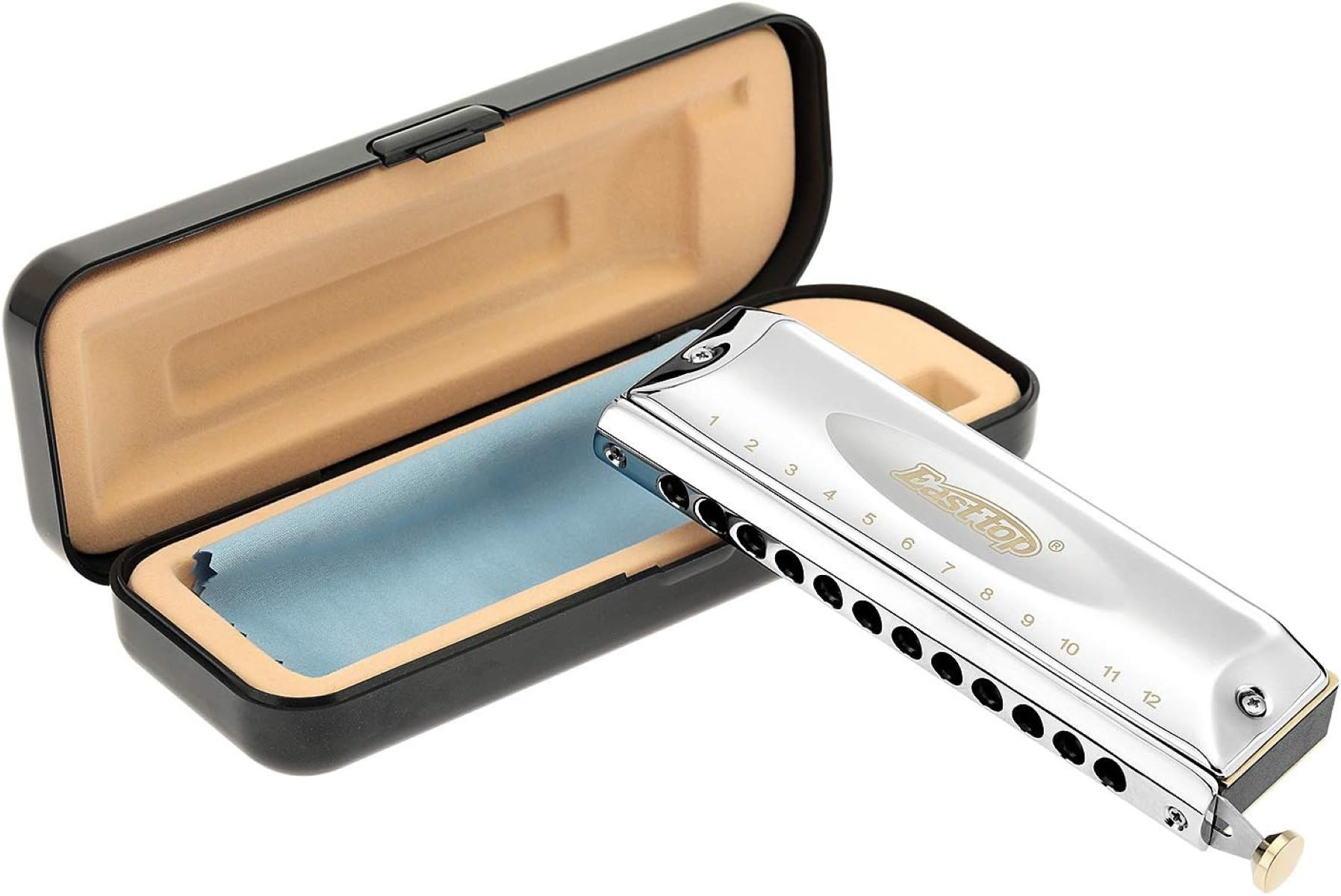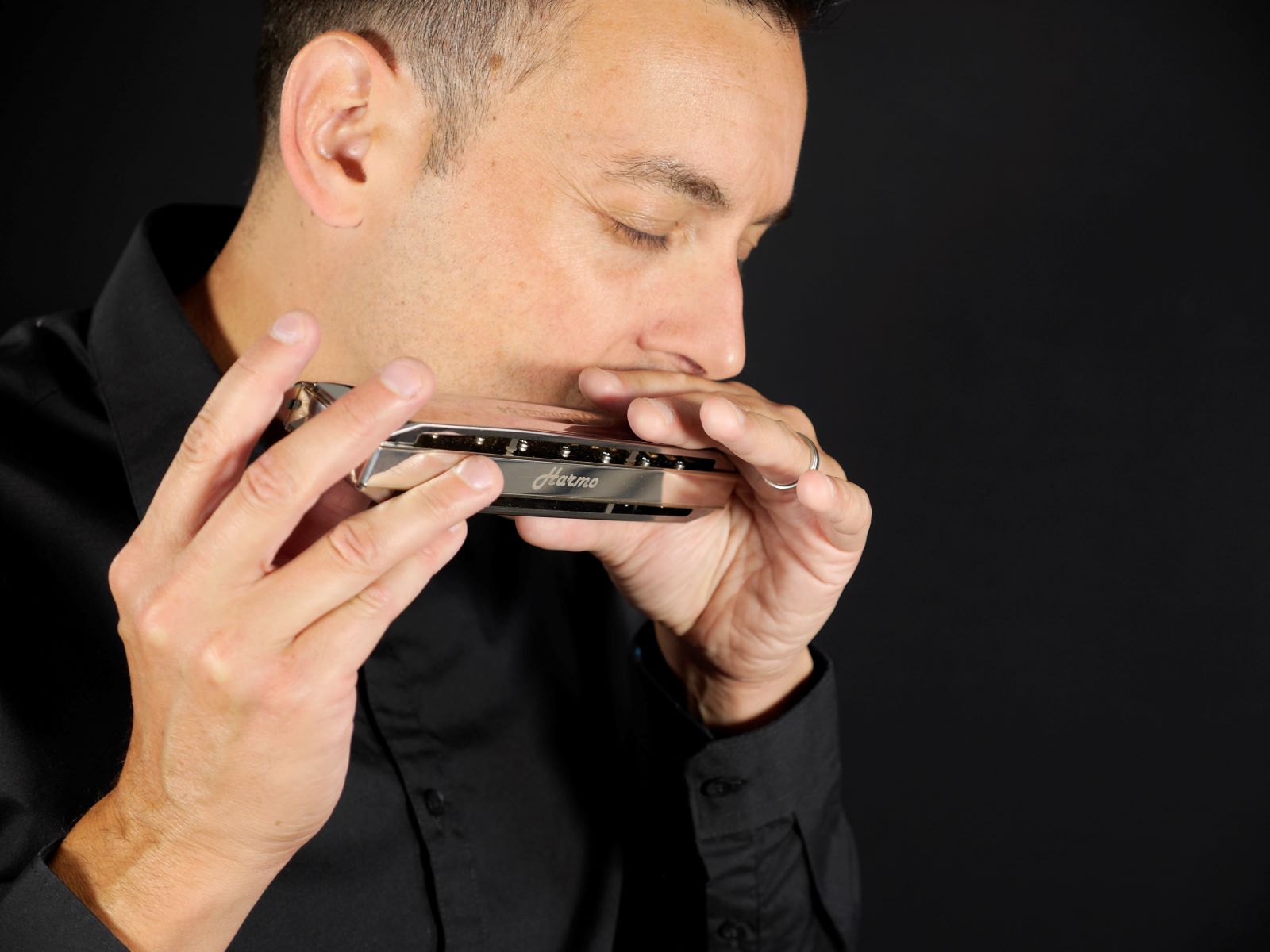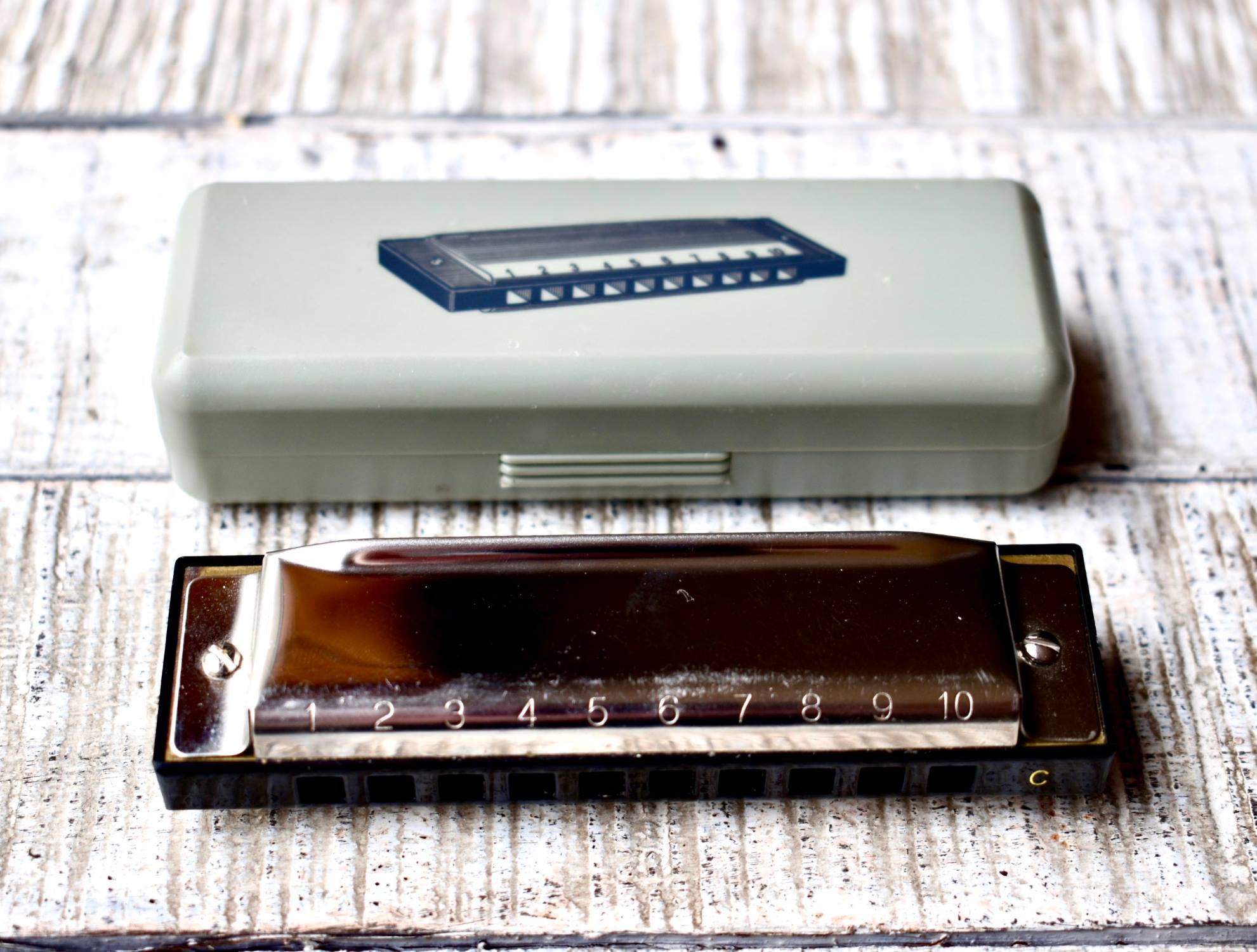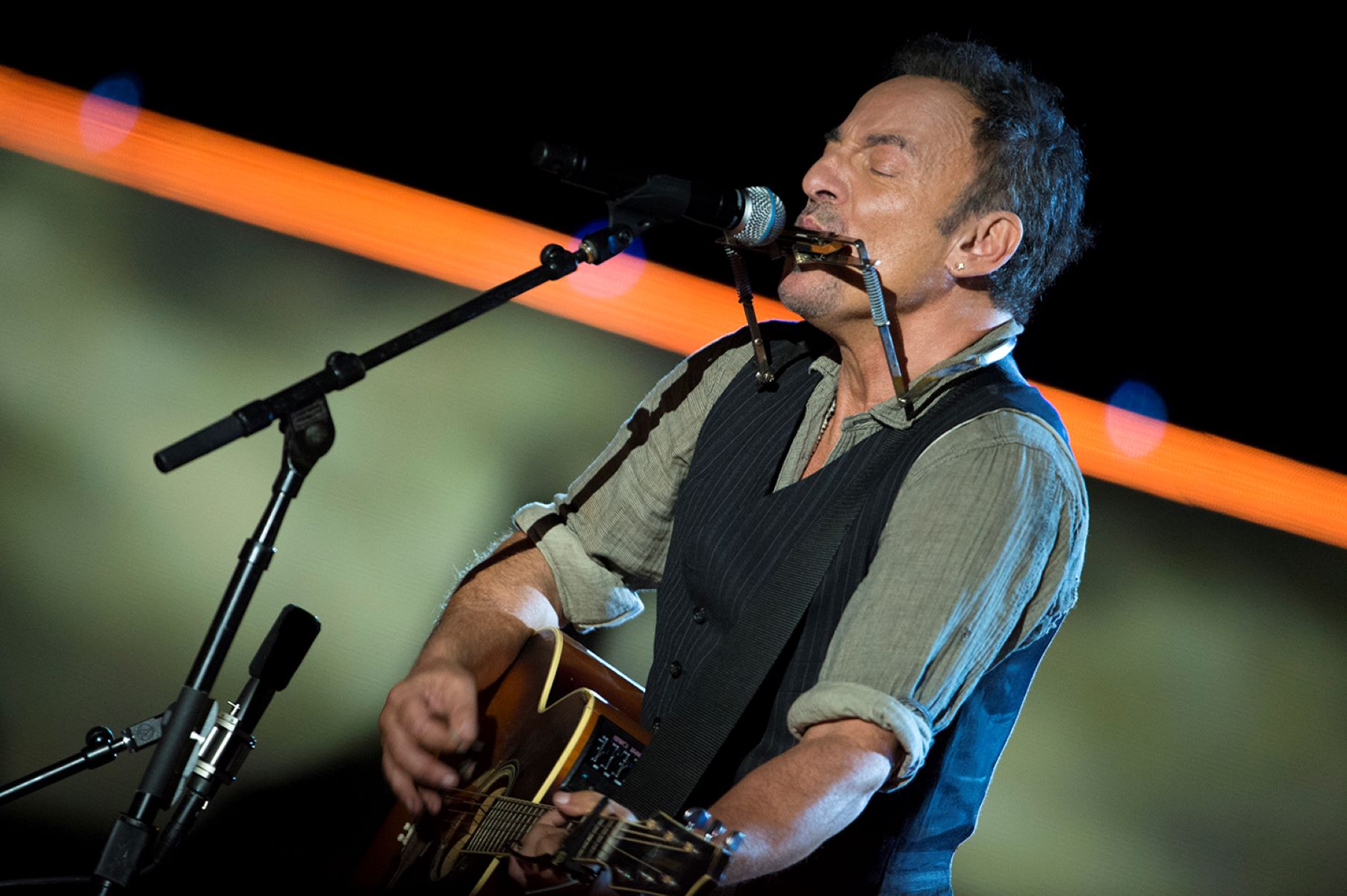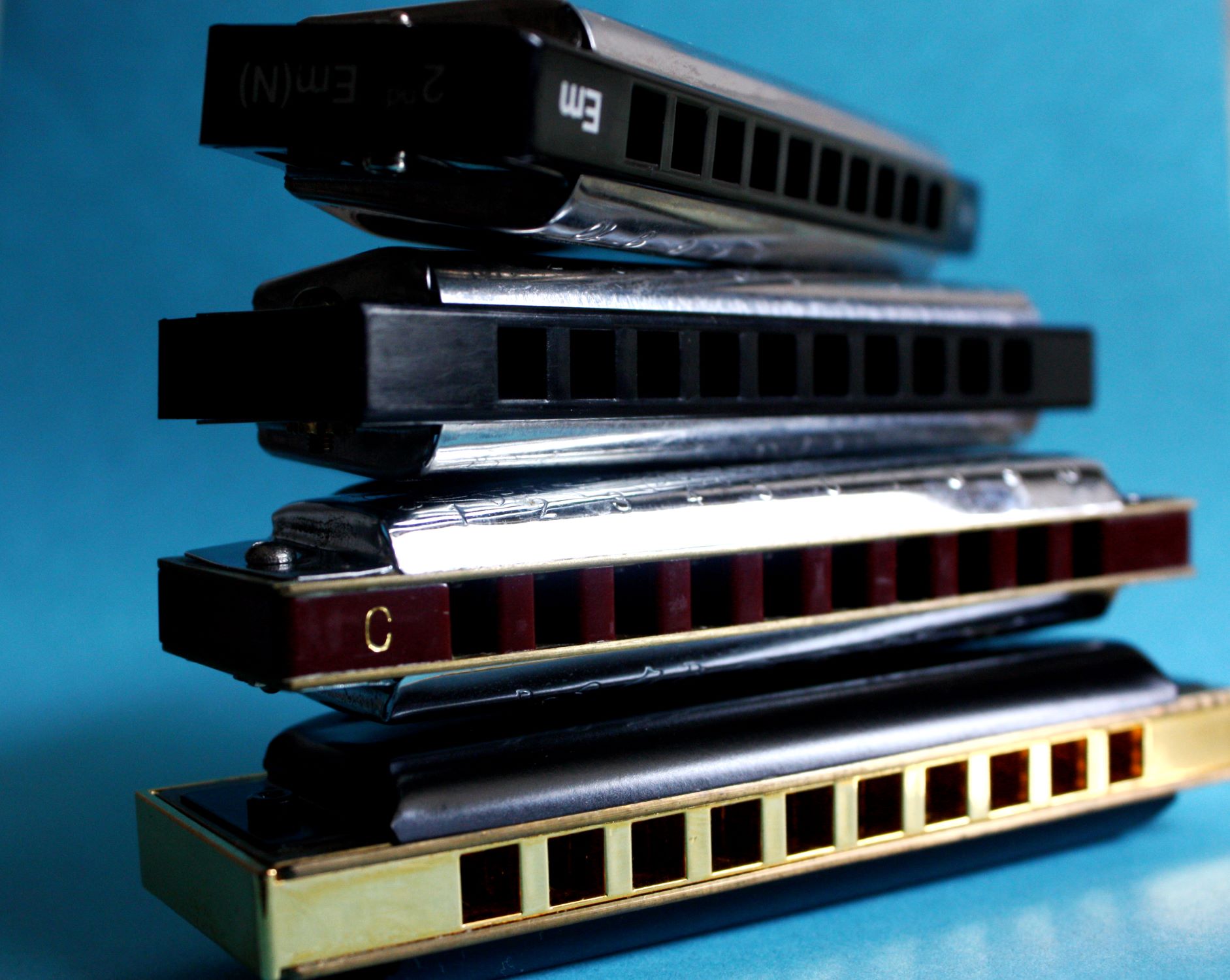Home>Instruments>Harmonica>What Is A Harmonica
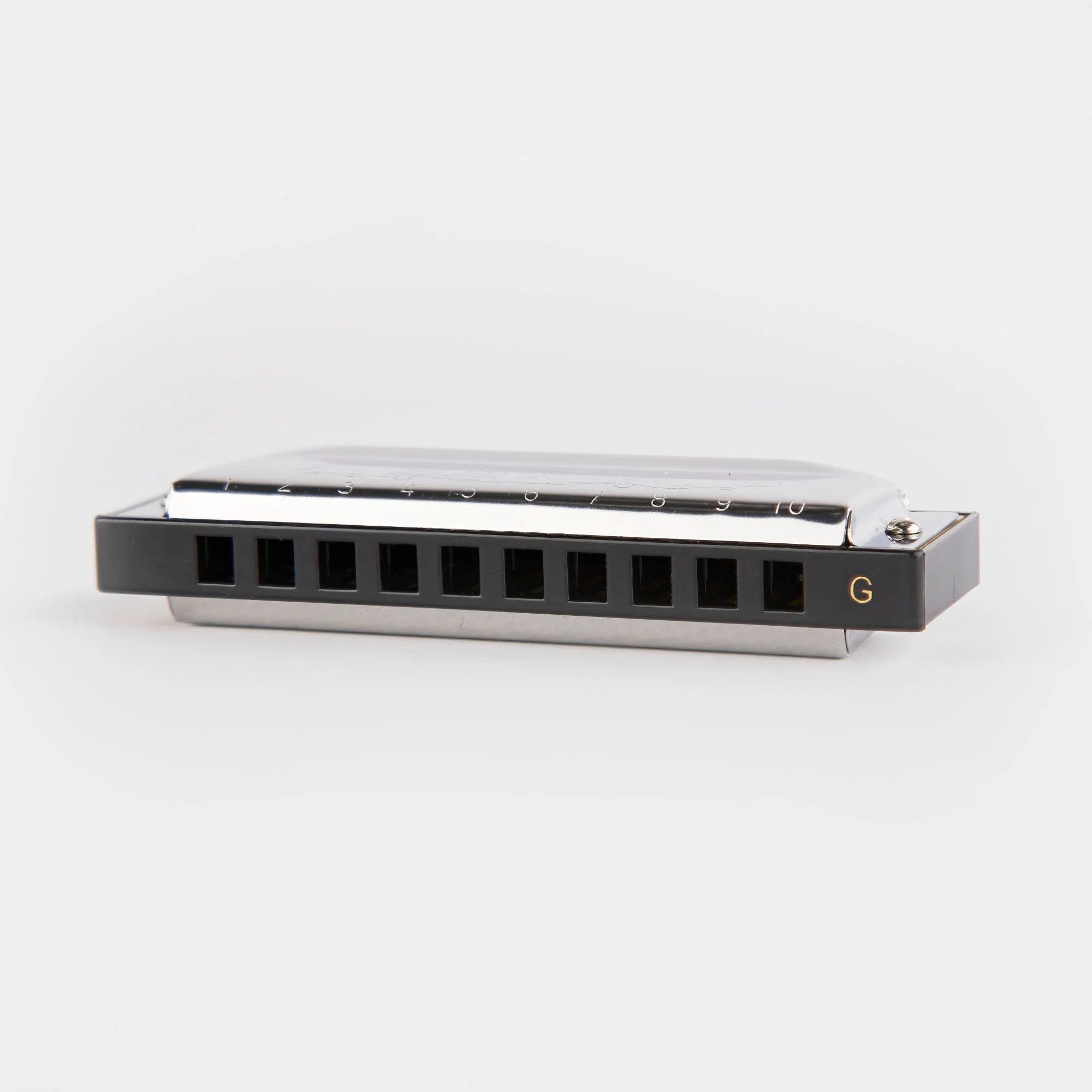

Harmonica
What Is A Harmonica
Modified: February 3, 2024
Discover the magic of the harmonica and learn about its intriguing history, use in various music genres, and how to play this versatile instrument.
(Many of the links in this article redirect to a specific reviewed product. Your purchase of these products through affiliate links helps to generate commission for AudioLover.com, at no extra cost. Learn more)
Table of Contents
Introduction
The harmonica, also known as the mouth organ or harp, is a small wind instrument that has captured the hearts of music enthusiasts around the world. With its portable size and soulful sound, the harmonica has found its way into a wide range of musical styles, from blues and folk to jazz and rock.
Derived from ancient musical instruments like the Chinese sheng and the reed pipes of ancient Greece, the harmonica as we know it today was first developed in the early 19th century. It quickly gained popularity due to its versatility and accessibility, becoming a staple in various genres of music.
The harmonica is a free reed instrument, meaning that it produces sound when air passes through metal reeds that vibrate inside the instrument. It is played by placing the instrument against the lips and mouth and manipulating airflow and tongue position to create different notes and effects.
In this comprehensive guide, we will explore the history, anatomy, types, playing techniques, famous players, and maintenance of the harmonica. Whether you are a beginner looking to learn the basics or an experienced player seeking to refine your skills, this article will provide you with the knowledge and insights to deepen your understanding and appreciation of this remarkable instrument.
History of the Harmonica
The roots of the harmonica can be traced back thousands of years to ancient civilizations. The Chinese sheng, a wind instrument with multiple pipes and reeds, is believed to be one of the early influences on the development of the harmonica. The sheng was introduced to Europe in the 17th century, where it underwent modifications to become the instrument we now know as the harmonica.
However, credit for the invention of the modern harmonica is often given to Christian Friedrich Ludwig Buschmann, a German clockmaker. In the early 19th century, Buschmann created a small instrument called the “Aeolina” that featured metal reeds and a mouthpiece. While the Aeolina had limited success, it laid the foundation for further innovations.
In the 1820s, a fellow German named Matthias Hohner began experimenting with harmonicas and eventually established the Hohner company, which would become one of the most renowned harmonica manufacturers in the world. Hohner’s design improvements, such as adding a sliding button to change the pitch and creating different sizes and keys of harmonicas, greatly contributed to the instrument’s popularity.
The harmonica gained widespread recognition in the late 19th century, thanks in part to its use in the burgeoning American blues scene. Legendary blues musicians like Sonny Boy Williamson, Little Walter, and Big Walter Horton showcased the expressive capabilities of the harmonica, bringing it into the spotlight and inspiring countless musicians around the world.
Over the years, the harmonica continued to evolve, with advancements in reed materials, comb materials, and manufacturing techniques. Chromatic harmonicas, which allow players to access all the notes of the Western musical scale, were developed in the early 20th century, further expanding the instrument’s versatility.
Today, the harmonica remains a beloved instrument in various musical genres. Its distinctive sound and portable nature have made it an essential tool for solo performers, band members, and even orchestras. The harmonica’s rich history and its ability to convey deep emotion and soulfulness continue to captivate audiences worldwide.
Anatomy of a Harmonica
To understand how the harmonica produces its unique sound, it’s essential to familiarize yourself with its anatomy. While there are variations among different types and models of harmonicas, they generally share common components.
1. Covers: The covers are the metal plates that enclose the harmonica’s reed chambers. They feature precision-made cutouts, known as holes or slots, through which the player blows air to produce sound.
2. Reed plates: The reed plates consist of brass or stainless steel reeds attached to a comb, usually made of plastic or wood. Each reed corresponds to a specific note and vibrates when air passes over it.
3. Reeds: The reeds are thin strips of metal that are riveted or screwed onto the reed plates. When the player blows or draws air through the harmonica, the reeds vibrate, producing sound.
4. Comb: The comb is the main body of the harmonica, providing a platform for the reed plates. It is typically constructed from materials such as plastic, wood, or metal. The comb’s shape, size, and material affect the instrument’s tone and responsiveness.
5. Covers and Mouthpiece Assembly: This assembly holds the covers in place and provides a comfortable surface for the player’s lips. It may also include a mouthpiece, which is a small plastic or metal tube that directs the airflow into the instrument.
6. Valve: Some harmonicas have valves, which are thin strips of material that control the airflow to the reeds. Valves help prevent air leakage and enhance playing techniques like bending and overblowing.
7. Slide: Chromatic harmonicas often have a slide, which is a movable button or lever located on the top of the harmonica. When the player pushes or pulls the slide, additional reed chambers are activated, allowing access to the missing notes of the chromatic scale.
Understanding the various parts of the harmonica is essential for maintenance, repair, and choosing the right instrument for your playing style. A harmonica’s design and construction significantly impact its sound, responsiveness, and durability, making it crucial to consider the quality of materials and craftsmanship when selecting a harmonica.
Types of Harmonicas
The harmonica comes in various types, each with its own unique characteristics and playing techniques. Here are some of the most common types of harmonicas:
1. Diatonic Harmonica: The diatonic harmonica, also known as the blues harp, is perhaps the most popular type. It is designed to play in a specific key and has a major scale layout. Diatonic harmonicas are widely used in blues, folk, country, and rock music.
2. Chromatic Harmonica: The chromatic harmonica is a versatile instrument that can play all 12 notes of the Western musical scale. It features a sliding button on the top that changes the airflow direction, allowing for additional notes. Chromatic harmonicas are commonly used in jazz, classical, and pop music.
3. Tremolo Harmonica: The tremolo harmonica is recognized by its double rows of reeds for each note. As the player blows air through the harmonica, the slightly detuned reeds create a shimmering effect. Tremolo harmonicas are often used in folk music and ballads.
4. Octave Harmonica: The octave harmonica consists of two reeds for each note, tuned one octave apart. This produces a rich and full sound. Octave harmonicas are particularly popular in Cajun music, as well as in Irish and folk styles.
5. Bass Harmonica: The bass harmonica is a large instrument with a deep and resonant sound. It is typically used in orchestras or as a solo instrument in jazz and classical music.
6. Orchestral Harmonica: The orchestral harmonica, also known as the chord harmonica, is designed to play chords. It can produce full harmonies by playing multiple notes simultaneously, making it suitable for ensemble playing and accompaniment.
7. Custom and Specialized Harmonicas: Apart from the standard types, there are also custom and specialized harmonicas tailored to specific musical styles or individual preferences. These include instruments with alternate tunings, different scales, and unique modifications to achieve specific sound effects.
Each type of harmonica offers its own sonic possibilities and presents different challenges and techniques to master. Exploring various types can broaden your musical horizons and open doors to new creative opportunities.
How to Play the Harmonica
Playing the harmonica may seem intimidating at first, but with practice and a basic understanding of techniques, you can start making music on this captivating instrument. Here are the key steps to get you started:
1. Holding the Harmonica: Hold the harmonica by placing one hand over the covers, with your thumb on the bottom and your fingers resting on top. Use your other hand to support the harmonica and manipulate airflow.
2. Getting Sound: To produce a sound, place your mouth over one set of holes and gently blow or draw air through your lips, creating a steady stream of air over the reeds. Experiment with different tongue positions and mouth shapes to achieve different sounds and effects.
3. Playing Single Notes: Mastering the technique of playing single notes is vital for playing melodies and improvisation. Focus on isolating a single hole and drawing or blowing air only through that hole to produce a clear note. Practice moving from one hole to another to play different notes.
4. Bending Notes: Bending notes involves changing the pitch of a note by altering the airflow and the shape of your mouth. Start by drawing air through a hole and gradually lower your jaw and apply slight tongue pressure to bend the note downward in pitch. This technique adds expressiveness to your playing.
5. Playing Chords and Cross Harp: Learn how to play chords by blocking multiple holes with your tongue or lips to create a fuller sound. Additionally, many harmonica players gravitate towards “cross harp,” also known as second position, which involves playing in a different key than the harmonica’s default key. This allows for a bluesy, bent note sound often associated with harmonica playing.
6. Embellishments and Techniques: Explore various embouchure techniques such as tongue blocking, where you block some holes with your tongue while playing others, and using hand effects like wah-wah or vibrato to add texture and dynamics to your playing.
7. Learning Songs and Styles: Start by practicing simple melodies and songs to build your skills and confidence. There are many online resources, tutorials, and harmonica tablatures available to guide you along the way. You can also study the playing styles of your favorite harmonica players to incorporate their techniques into your own.
Remember, playing the harmonica is a journey of discovery and self-expression. It takes time and practice to develop your skills, but with dedication and a love for the instrument, you’ll unlock its melodic potential and find joy in creating music.
Common Techniques and Effects
The harmonica is a versatile instrument that offers a wide range of techniques and effects to enhance your playing and musical expression. Here are some common techniques and effects to explore:
1. Bending: Bending notes is a technique that allows you to lower the pitch of a note by manipulating your embouchure and airflow. It adds a bluesy and expressive quality to your playing, allowing you to infuse emotion into your melodies.
2. Vibrato: Vibrato is a rhythmic variation in pitch that creates a pulsating effect. It is achieved by slightly altering the airflow or using your throat muscles to produce subtle pitch fluctuations. Vibrato can add warmth and depth to your playing.
3. Wah-Wah: Wah-wah is a popular effect created by altering the shape of your mouth or using a plunger to modulate the sound. It produces a “wah” or “quacking” sound, reminiscent of a muted trumpet or a vocal expression.
4. Tongue Blocking: Tongue blocking involves blocking certain holes with your tongue while playing others to create chords, melodies, or specific effects. It allows for greater control over individual note articulation and opens up possibilities for more complex playing styles.
5. Overblows and Overdraws: Advanced techniques like overblows and overdraws allow you to play additional notes that are not present in the harmonica’s default layout. They require precise control of airflow and pressure, and can be used to extend the range of the instrument and play chromatic notes.
6. Tremolo and Trills: The tremolo harmonica is specifically designed to create a wavering effect by utilizing two reeds per hole that are slightly detuned. Tremolo can add a beautiful and ethereal quality to your playing. Trills involve rapid alternations between two adjacent notes, creating a lively and energetic sound.
7. Double Stops and Slaps: Double stops involve playing two notes simultaneously, often using tongue blocking and precise mouth positioning. Slaps are percussive sounds created by sharply striking the harmonica with your tongue or palm while playing.
Experimenting with these techniques and effects will allow you to develop your signature style and make your harmonica playing more dynamic and captivating. Listening to recordings of professional harmonica players and studying their techniques will inspire you and provide insight into the vast potential of this remarkable instrument.
Famous Harmonica Players
The harmonica has been embraced by many talented musicians throughout history, leaving an indelible mark on various genres of music. Here are some legendary harmonica players who have made significant contributions to the instrument’s popularity and versatility:
1. Little Walter: Considered one of the greatest blues harmonica players of all time, Little Walter revolutionized harmonica playing with his innovative techniques and a distinctive amplification sound. His soulful playing and powerful tone can be heard in iconic songs like “Juke” and “My Babe.”
2. Sonny Boy Williamson II: Known for his captivating voice and masterful harmonica playing, Sonny Boy Williamson II was a key figure in the Chicago blues scene. His compositions, including “Good Morning, School Girl” and “Help Me,” continue to inspire harmonica players worldwide.
3. Big Walter Horton: As a pioneer of blues harmonica, Big Walter Horton mesmerized audiences with his fluid technique and melodic playing. His contributions can be heard in tracks like “Easy” and “Blues in the Dark,” leaving a lasting impact on the blues harmonica tradition.
4. John Popper: The frontman of the American rock band Blues Traveler, John Popper is renowned for his virtuosic harmonica playing. His skills, showcased in hits like “Run-Around” and “Hook,” have earned him great admiration and helped popularize the harmonica in rock music.
5. Paul Butterfield: With his influential blues-rock band, The Paul Butterfield Blues Band, Paul Butterfield brought harmonica to the forefront of the American music scene in the 1960s. His powerful playing and soulful style can be heard in classics like “Born in Chicago” and “I Got My Mojo Working.”
6. Kim Wilson: As the frontman of The Fabulous Thunderbirds, Kim Wilson has established himself as one of the most accomplished and respected contemporary harmonica players. His dynamic playing on tracks like “Tuff Enuff” and “Wrap It Up” showcases his mastery of both blues and rock styles.
7. Howard Levy: Renowned for his incredible technical abilities and versatility, Howard Levy has pushed the boundaries of harmonica playing. His innovative techniques, such as overblowing and his incorporation of jazz and classical genres, have elevated the instrument to new heights.
These are just a few examples of the many exceptional harmonica players who have left an indelible mark on the music world. Their contributions have not just showcased the capabilities of the instrument, but have also inspired countless musicians to explore the harmonica’s expressive potential and contributed to its enduring popularity.
Maintenance and Care of a Harmonica
Proper maintenance and care are crucial to keep your harmonica in optimal playing condition and extend its lifespan. Here are some important tips to ensure the longevity and performance of your harmonica:
1. Cleaning: Regular cleaning is essential to remove saliva, dirt, and debris that can accumulate inside the harmonica. After each playing session, tap the harmonica gently on your hand or a soft cloth to dislodge any loose particles. You can also use a small brush or a compressed air canister to clean the reeds and comb.
2. Disinfecting: Since harmonicas come into contact with the mouth, it’s important to regularly disinfect them. You can use a solution of mild soap and water or specialized harmonica cleaning solutions to wipe down the covers, reed plates, and comb. Make sure to dry all the components thoroughly after cleaning.
3. Storage: When you’re not playing the harmonica, store it in a protective case or pouch. This helps to prevent scratches, dust buildup, and exposure to extreme temperatures or moisture that can damage the instrument.
4. Avoiding Moisture: Excessive moisture can cause swelling and warping of the harmonica’s wooden comb or damage the reeds. Always ensure that your mouth is dry before playing and try to avoid playing outdoors in rainy or humid conditions. If your harmonica becomes damp, gently tap it on a soft cloth and let it air dry completely before storing.
5. Preventing Damage: Handle your harmonica with care to avoid dropping it or subjecting it to unnecessary impact. Avoid eating or drinking while playing to prevent food particles or liquids from entering the instrument and causing damage.
6. Reed Adjustment: Over time, the reeds may require adjustment due to wear or improper play. If you notice any reeds not sounding correctly or sticking, it may be necessary to gently tweak or reposition them. This delicate task is best left to experienced harmonica technicians.
7. Rotation: Playing your harmonica regularly is important to prevent moisture buildup and keep the reeds responsive. It’s a good idea to rotate between multiple harmonicas if you have them, allowing each one to dry out and rest between playing sessions.
By following these maintenance tips, you can ensure that your harmonica remains in optimal condition and continues to deliver the sweet melodies and soulful sounds that make it such a beloved instrument.
Conclusion
The harmonica is a remarkable instrument that has captured the hearts of musicians and audiences around the world. From its humble beginnings to its prominent role in multiple musical genres, the harmonica has proven to be a versatile and expressive tool for musicians of all levels of expertise.
Throughout this guide, we have explored the history, anatomy, types, playing techniques, famous players, and maintenance of the harmonica. We have delved into the ingenuity of its inventors, the intricacies of its construction, and the myriad of playing styles and effects that can be achieved through it.
Whether you’re drawn to the soulful bends of the blues, the melodic trills of folk music, or the captivating sounds of jazz and rock, the harmonica offers a world of musical possibilities. With dedication, practice, and an understanding of techniques, you can unlock the full potential of this small but mighty instrument.
Remember, the harmonica is not just a tool for creating music; it’s a gateway to self-expression and storytelling. It has the power to evoke emotions, transport listeners to different times and places, and connect people through shared musical experiences.
So, pick up your harmonica, explore the wide range of playing techniques, learn from the masters who have paved the way, and create your own musical journey. Whether you’re playing alone or jamming with others, the harmonica’s enchanting sound will continue to captivate and inspire both you and your audience.
Enjoy the endless possibilities that the harmonica offers and let its soulful sound be your guide on an unforgettable musical adventure!

